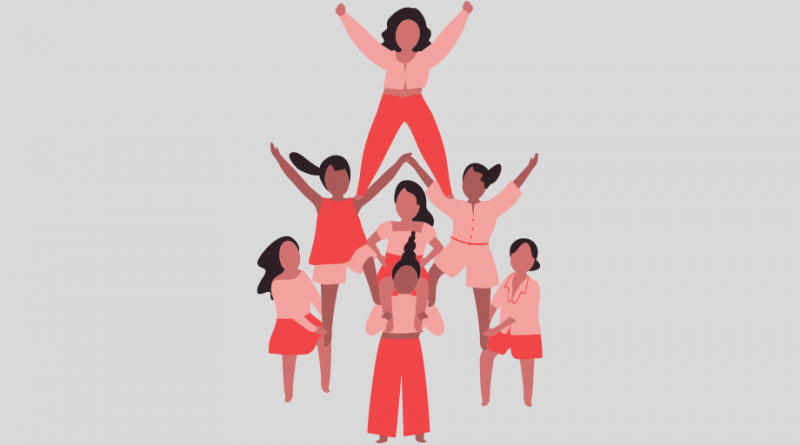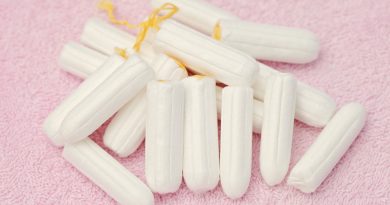HEJSupport Interview with Ebby Weyime, Founder of The Grace Cup
Hailey Morton (HEJSupport) sat down with Ebby Weyime, Founder and Owner of The Grace Cup, to speak about her work with the company. The Grace Cup is the first and only menstrual cup brand in Kenya.
*Note: This interview has been edited for clarity.
Hailey Morton: Please tell me a little bit about yourself and your organization.
Ebby Weyime: My name is Ebby Weyime, I am 33 years old. I am the founder and the owner of The Grace Cup. At The Grace Cup we deal with reusable period products, that is, menstrual cups and cloth pads. Apart from that, we are now extending out a bit into sexual and reproductive health, especially with young girls. I’m also a certified menstrual hygiene management trainer. So I train both boys and girls on matters of menstruation, but we use a head-to-toe approach, as I like calling it. So we talk about menstruation, but [for] adolescents – What is menstruation? Why is it happening? Et cetera.
HM: What inspired you to start your company?
EW: I used to live in South Africa, in Cape Town, [and] I used to be a model and an actor. Then I started using a menstrual cup, and it was so amazing for me, that I just kept thinking, “Why aren’t more women using it?” So when I started using it, I figured “Let me come home,” because I was planning on coming back home anyways. I figured “Let me come home and try it,” you know, and just educate more women about it. Because I was talking about it all the time, I figured I might as well make a business out of it. And that’s how it was born.
HM: That’s amazing. So that ties into my next question, which is: What would you say are some of the benefits to using menstrual cups, as opposed to traditional menstrual products like pads and tampons?
EW: There are many, but my top three I usually [give are]:
Number one, it’s good for the environment – any reusable product, be it a cup or a cloth pad – because there’s nothing to be thrown away, as compared to the disposable, single-use items that have to be thrown away. They contain plastic and they’re not biodegradable. Actually now, studies show that it takes about 500 years for [disposable products] to decompose. So basically, for example, for me, the first pad that I ever used is still lying somewhere in the landfill because it hasn’t been 500 years yet. So it’s good for the environment in terms of, there’s nothing to be thrown away, so there’s no pollution.
And then, number two – it’s good for the pocket. Because, especially here in Africa, there’s a lot of period poverty in terms of women [being unable to] afford sanitary products. Here, it’s about 50 shillings, which is less than a dollar basically, for a package of pads. But then, if you’re living in a country where some people don’t even make a dollar a day, then a pad doesn’t really become a necessity, over something like food. So you see when you give the woman a reusable product, then they don’t have to keep thinking about what to use every single month. Basically, I keep saying, don’t give a girl a fish, teach her how to fish. And you teach her how to fish by giving them a sustainable product, so that even if next month you don’t give her a pad, she’s still okay, she has something she can use. And you’re also giving her dignity, because without having a proper product, then it’s very hard for a woman to sustain herself.
Then the third reason [is] it’s good for your health, because there are no [toxic] chemicals in it. Everything is organic, so there are no irritations, there [are] no [toxic] chemicals, there’s no risk of toxic shock syndrome. So those are my top three, and that’s why it’s advisable to use a reusable period product, be it a cup or a pad.
HM: That’s a great explanation. So my next question is: What does menstrual equity mean to you?
EW: To me, I feel menstrual equity means access to period products that are safe for every woman. Doesn’t matter the race, doesn’t matter the age, but let them all be accessible and affordable, and safe. So safe, affordable, and accessible.
HM: What do you think is the role of education in moving toward sustainable menstruation and menstrual equity?
EW: The role of education is, number one, breaking of the taboo. Because there’s a very big taboo still when it comes to menstruation. So a period is still seen as unholy, unclean, a woman who’s dirty and should be put aside for those three or four days that she’s menstruating. So education comes in in terms of educating the masses about menstruation in general, and teaching them that it has nothing to do with a woman being dirty, it has nothing to do with a woman being lazy, it has nothing to do with a woman being anything negative, basically. And I feel that there’s been a lot of, unfortunately, especially here in Africa, culture and religion playing a very big role in perpetuating this negative narrative of periods being bad or being nasty.
HM: Definitely, and I think that [stigma] is a big issue here as well. So my next question would be: What are some of the primary barriers you think need to be addressed in order to implement sustainable menstruation more broadly?
EW: The current barriers I feel like [include] lack of knowledge; people are unfortunately ignorant about reusable period products. They don’t really understand how they’re used – there’s a lot of misconception out there. Because I feel like people fear what they don’t understand, especially when it comes to something like a menstrual cup. I’ve heard a lot of “It will cause cancer, it will break your virginity, it’s plastic,” you know. But it’s all because they’ve not been informed, they don’t really understand. But I feel like with more and more education – not just from me but also from current users – then we’re breaking [the taboo] slowly. Because I feel like when I started The Grace Cup back in 2017, cups were almost unheard of. But I feel like the more people use The Grace Cup, they’re like my ambassadors actually, because they’re the ones that spread the word. Because actually now, a huge percentage of the sales for my cup are actually referrals – someone who uses one and then tells their sister, and then tells their mother, and then it keeps spreading like that. Education doesn’t just come from us, it also comes from the actual users. So I feel like it’s planting a seed, you know? Sometimes when I go for the training, I’m like “Even if you don’t buy the cup, just have the knowledge of it, so that in case you’re in a forum where people are talking about it, you can actually be in a position to educate them about it.”
HM: That’s incredible. My final question would be: How can our readers learn more about your organization?
EW: We are everywhere on social media. So, starting with Facebook, Instagram, YouTube. We also have a website. So everything is @thegracecup. You can find us there. And we’re very active on YouTube and Instagram.
HM: Thank you so much for taking the time to speak with me today.



